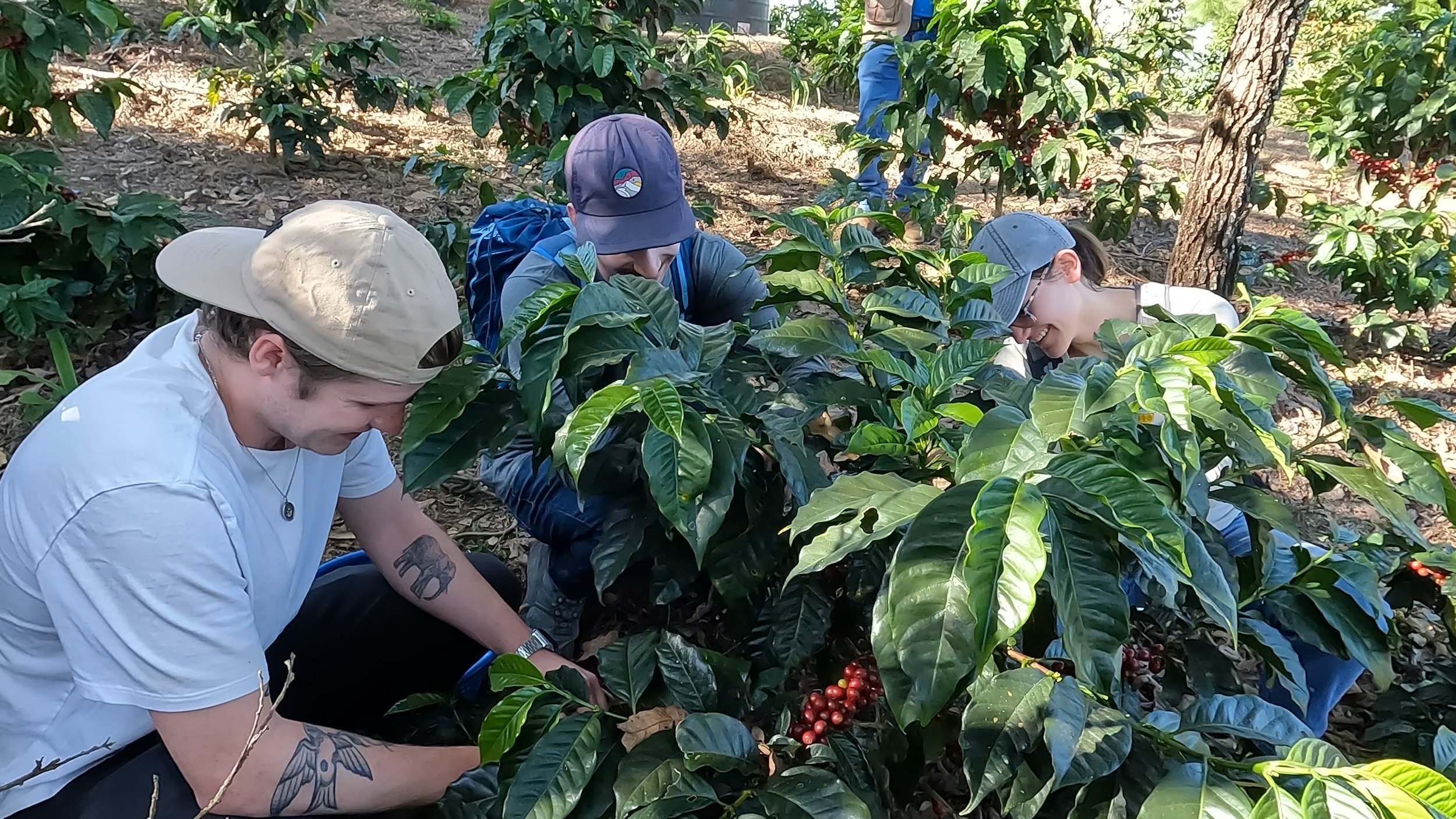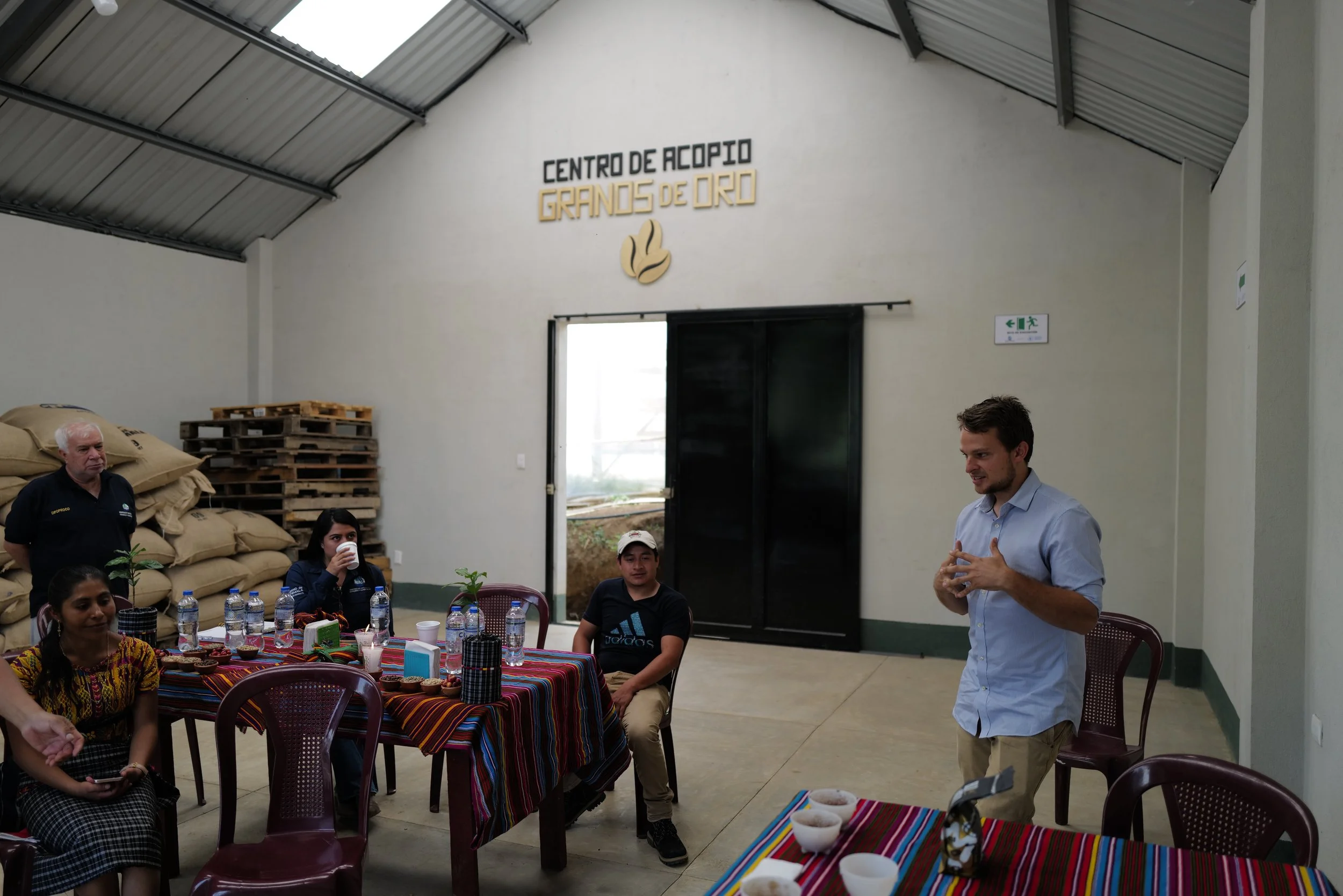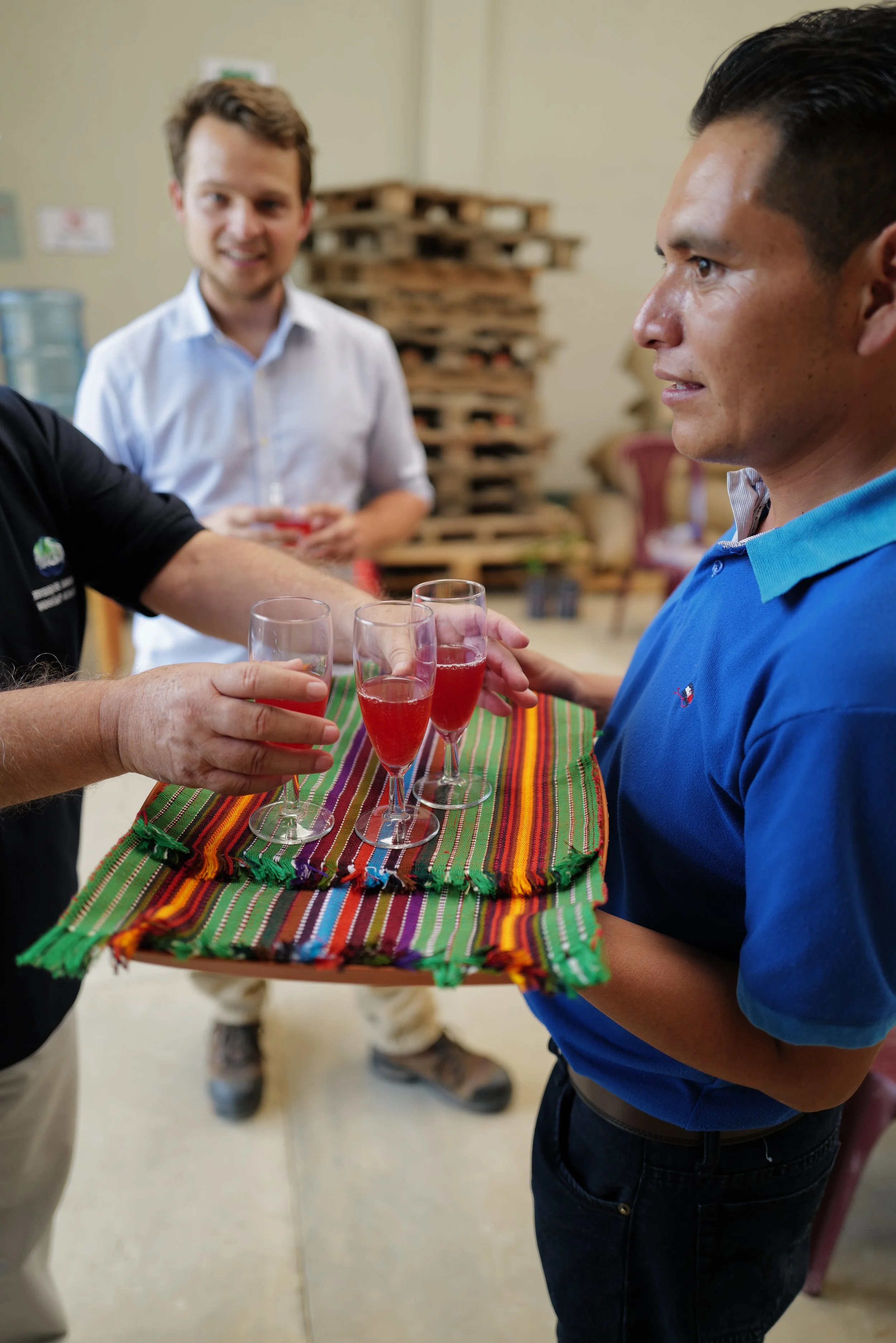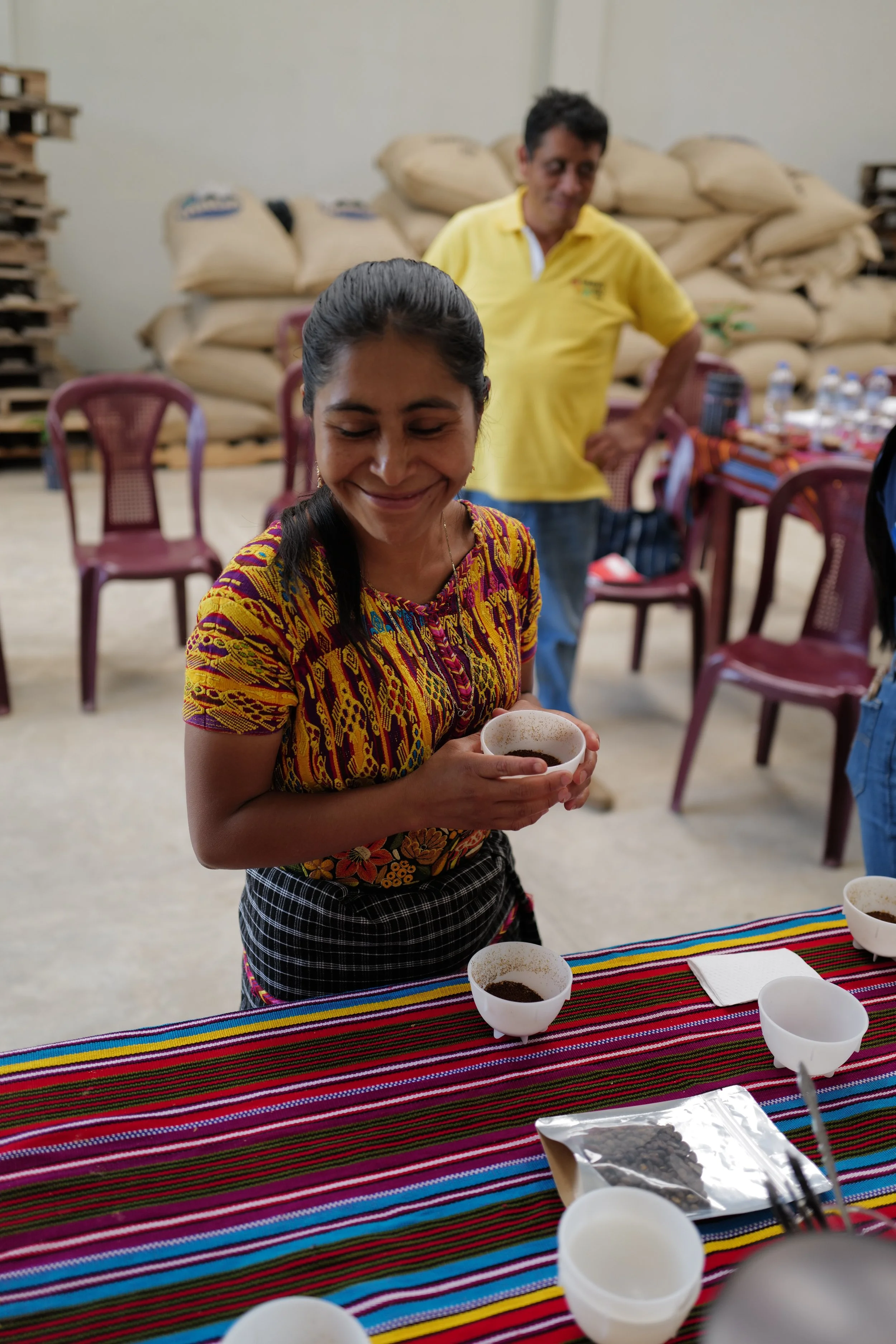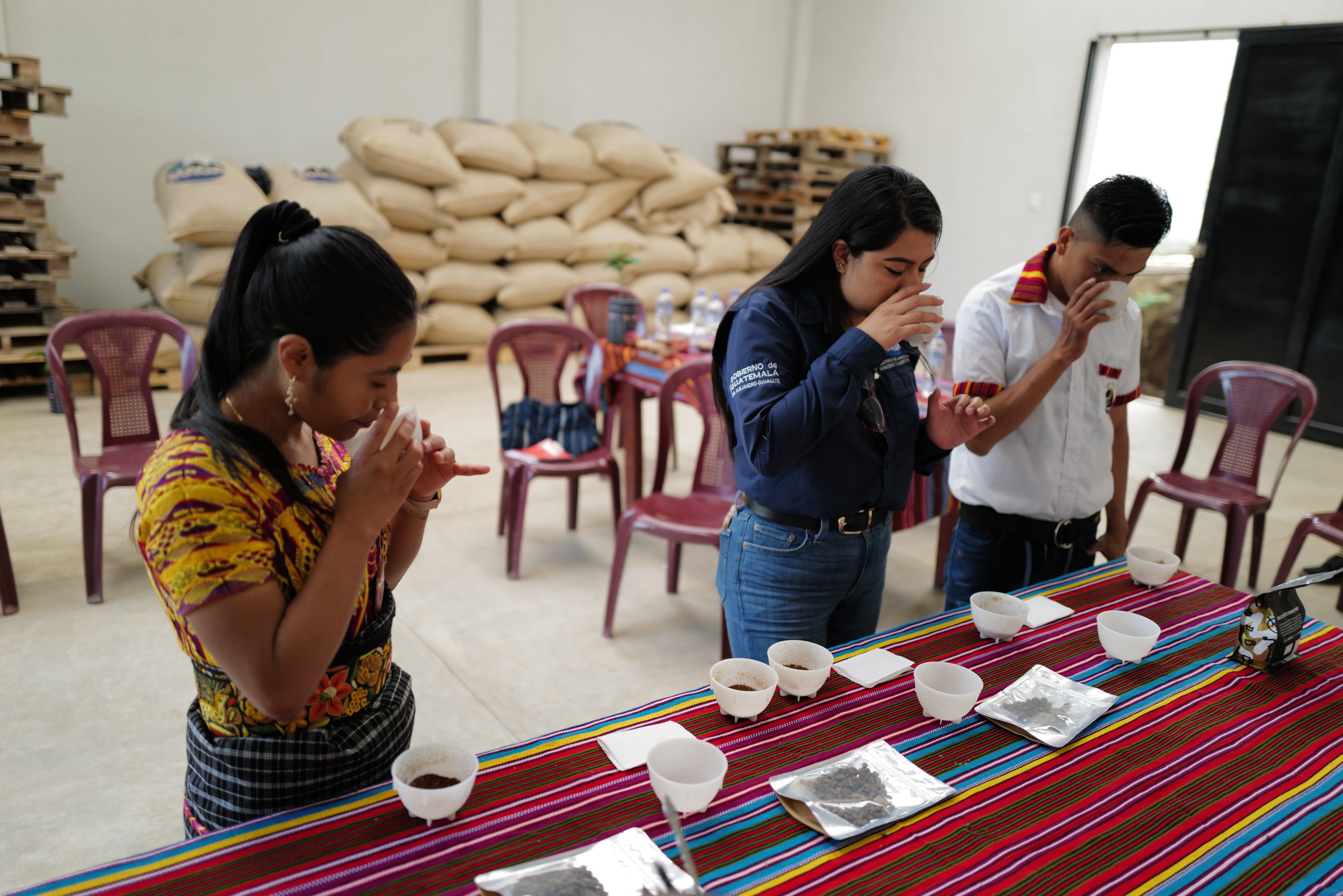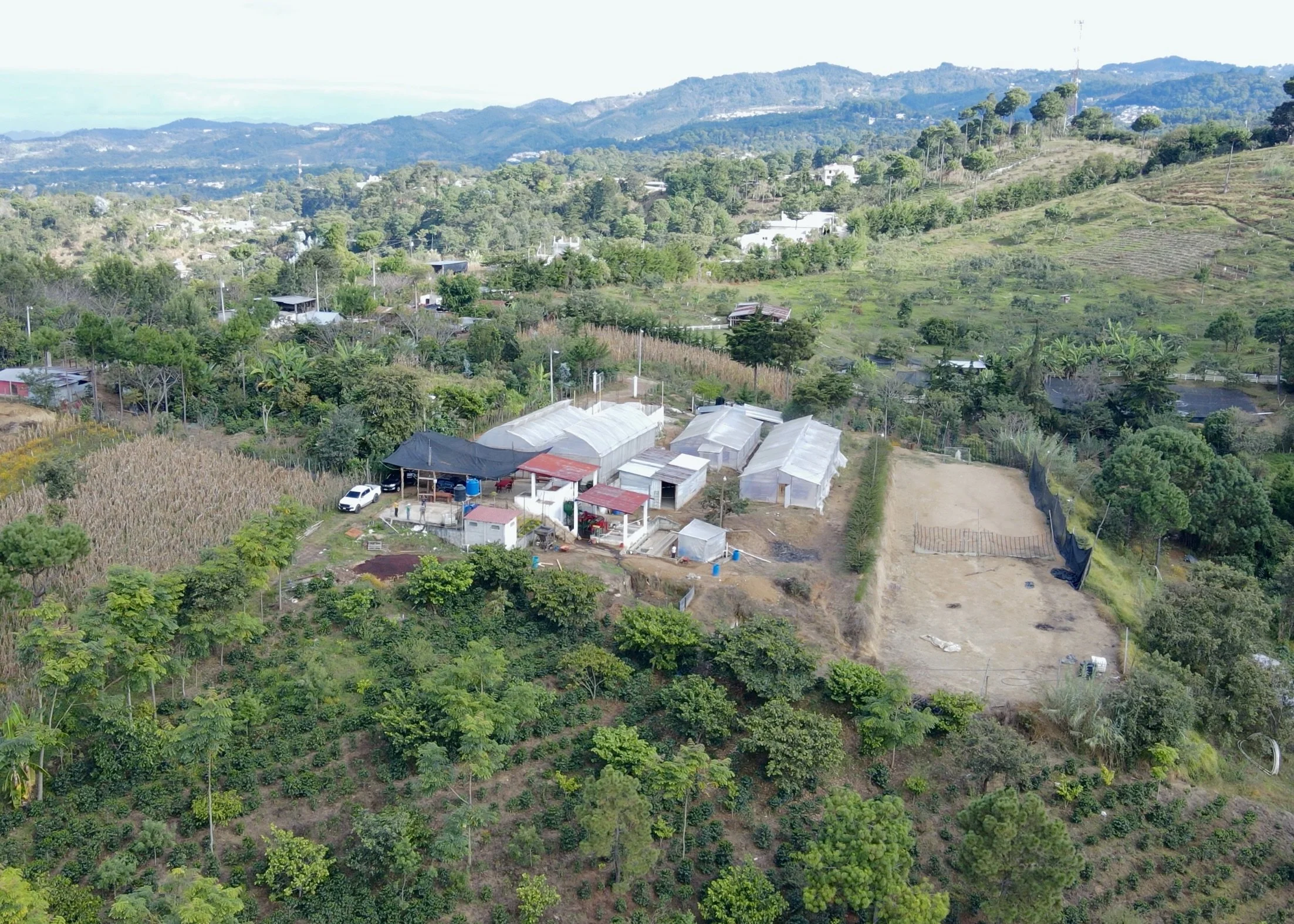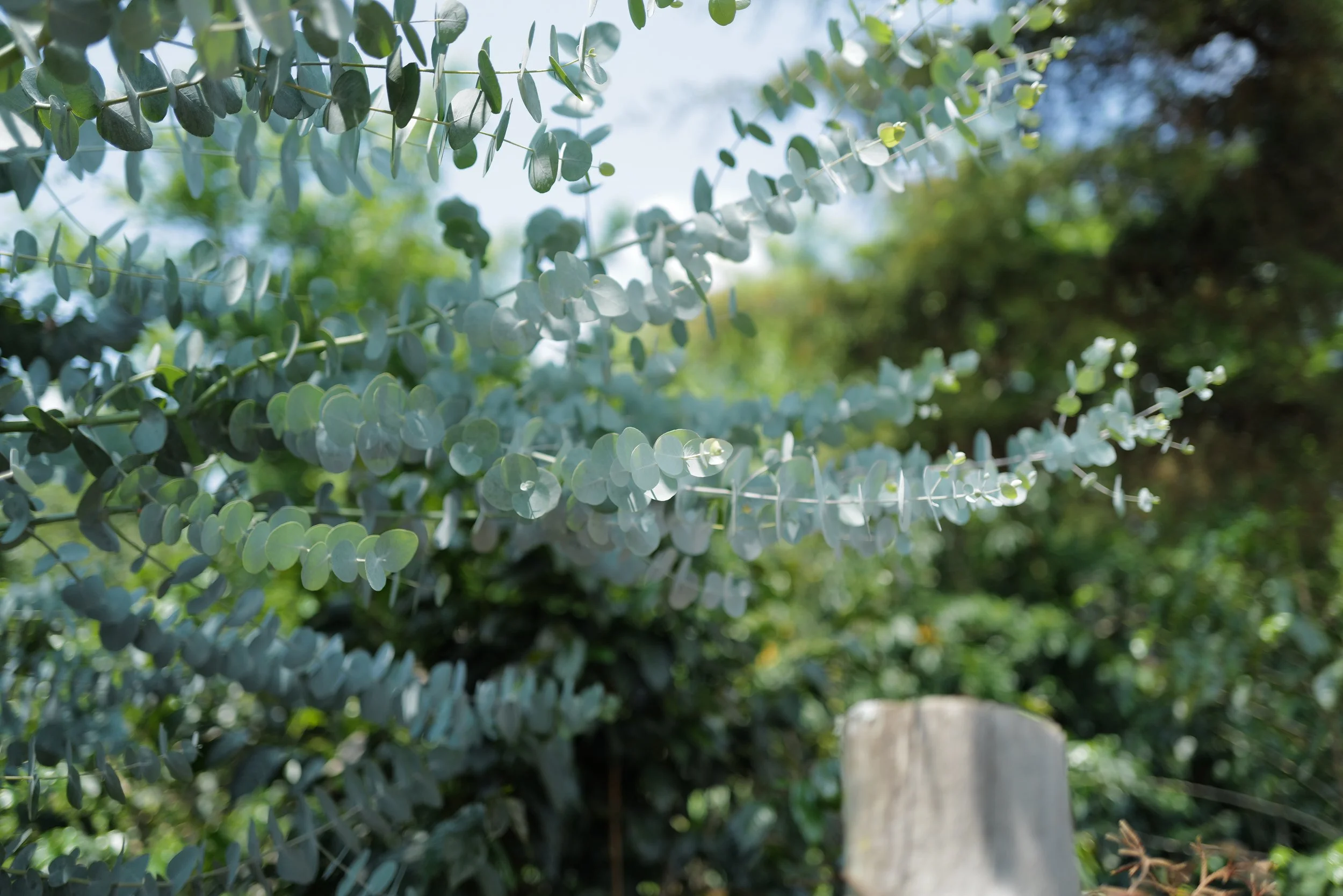
La Cooperativa Integral Agricola Cafetaleros de San Juan Sacatepequez
(CIACAFE)
66+
CIACAFE is a collective of 66 Members which directly impact +200 Coffee Producing Families
14°44'48.0" N -90°39'59.1" W
GPS Location of CIACAFE San Juan, Sacatepequez
2
We’ve been in relationship with CIACAFE since 2022. This will be our 1st harvest buying from CIACAFE!
12
CIACAFE was formed back in 2011. They’ll be celebrating their 13th year on March 18th, 2024
Meet La Cooperativa Integral Agricola Cafetaleros de San Juan, Sacatepequez! (CIACAFE for short!)
Impressed is probably the shortest way for us to sum up what we’ve seen and experienced from the San Juan producers behind this cooperative. Their eagerness to learn, commitment to follow through, vision for what coffee production can look like, and their focused purpose on bettering their community are all reasons why we’re stoked to be representing coffees from Ciacafe. (Oh yeah, their coffees are pretty stellar too!)
Background:
This cooperative represents another category that we like to call “Hidden Gems.” Although coffee has been grown in San Juan Sacatepequez for a couple of generations now, it’s not commonly known as a coffee-producing region or given much recognition on a national or international level.
(Fun fact: San Juan is actually known for being the flower capital of Guatemala. Many of the colorful flowers used for traditional events and parades are often grown and sold from San Juan Sacatepequez.)
When it comes to coffee, the majority of producers in this region have limited market options. Most producers therefore just sell in cherry format to coyotes who later sell their coffee to more recognized regions like Antigua for marketability reasons. This often means producers are receiving the least potential value for their coffee.
In 2011, as a way to make small steps towards establishing a more equitable supply chain for coffee producers in San Juan, a small group of producers came together and formed Ciacafe. Their first steps looked like buying land, and beginning to process their own cherries into parchment format. They literally built a homemade wooden de-pulper and started from there. With each year, they grew and learned more with the support of many others and from the mistakes they made along the way. Ten years later, they found themselves with a fully built wet-mill, immersed in further education courses, taking agronomy classes, exploring worm composting, discussing honey water environmental impacts, building several solar dryers, beginning to sell to a reputable Guatemalan national coffee roasting chain, and they began to ask, “what’s next?”
As they’ve grown over the years and taken huge developmental strides, they’ve held tight to their mission statement which is “… to build up producers contributing to the region, strengthening support in technical advice in the management of coffee cultivation, thus improvement of the quality of life of our associates.” (The translation is a bit rough but the point that we see often is that their focus and mission always circles back to the wellbeing of their community and its members. It’s a trait we see in them that we really enjoy.
Where is Ciacafe at now? What are their dreams for the future?
In regards to where Ciacafe is at currently, Don Dimas Borar, the green coffee relationship manager of Ciacafe, wrote that they’re thankful to have reached the first stage or goal in their plans to have a 1) fully equipped wet mill capable of managing their entire harvest, 2) installations to produce organic fertilizers while taking advantage of the honey waters and pulp byproduct, 3) sufficient land with 3.5MZ of coffee they’re able to use to continue improving their installations, and 4) that their associates are trained and equipped in good harvesting techniques and general farm maintenance. He’s thankful they’ve reached this point in their development/growth which enables them to be ready and prepared for the demands of the international market.
Speaking on behalf of their dreams, Don Dimas wrote that they’d like to see themselves 1) maintaining a market with pricing correlative to growing quality coffee conscious of both environmental impact and honoring livelihoods of coffee producing families, 2) to own their own dry mill someday to better take advantage of all the byproducts of coffee which would provide more job employment opportunities and better coffee enjoyed locally, and 3) to be recognized as an innovative cooperative that’s providing education and employment for the many distinkt talents of the youth in San Juan, and 4) to see them motivate a healthier economy for their surrounding community and home-life.
Misc Notes:
Max Perez behind Finca La Hermosa helped us to work with Ciacafe this year. Since Ciacafe hasn’t gotten their export license yet, we wouldn’t have been able to buy directly from Ciacafe if it weren’t for Max’s willingness to lend us his export license. Thank you Max! (We love seeing larger producer organizations support smaller ones!)
Our Remarks:
This level of drive and historical growth for such a small coffee cooperative blows our mind still today. They’re redefining what’s possible and setting up an amazing infrastructure of what healthy cooperatives can look like focused on the betterment of community livelihoods. When it came to cupping quality, we were amazed at the quality level they were producing as a first year relationship for us. We’re more than happy with the coffees they’ve produced with us in mind this year and we’re eager to see what more is in store years down the road.
Keep crushing it Ciacafe!
To learn more, take a look at their available lots or reach out and send us a message!
